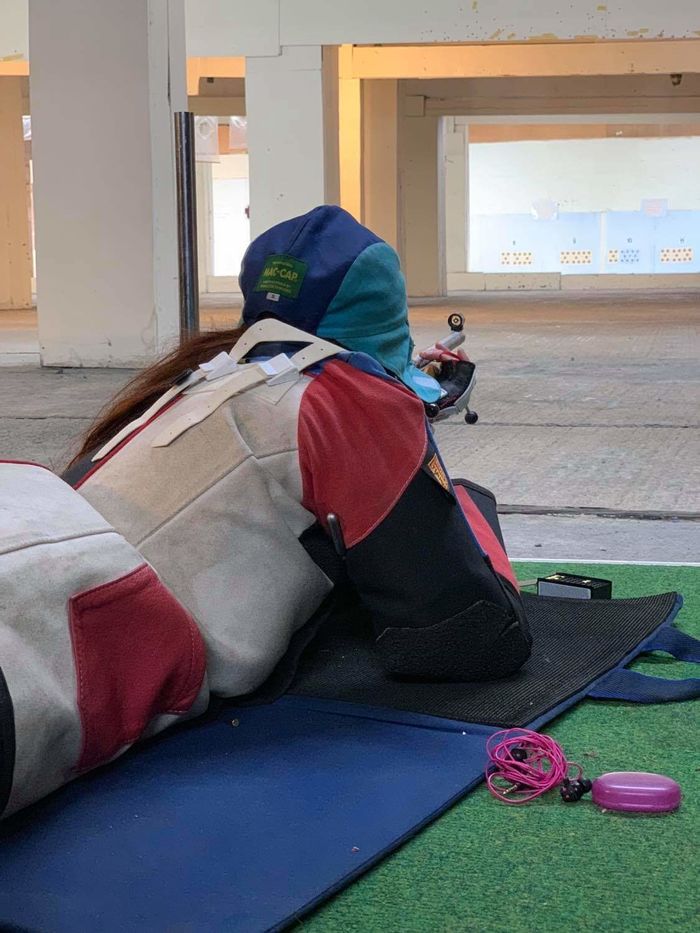BUCS Nationals Review – CUTKD
Looking back at a triumphant weekend for Cambridge sport from the teams on the podium

After a hugely successful BUCS Nationals contest up in Sheffield for Light Blues across the sporting spectrum between February 14th and 16th, we catch up with the victorious teams and get the low down on their success. Here, we hear from Cambridge University Taekwondo Club (CUTKD) members Lucy Xu and Bryan Chong.
Lucy Xu
Tell us about yourself and your involvement in the Taekwondo Club?
I’m Lucy, a second year medic who started taekwondo at Uni. I’m the club’s ‘Equipment & Stash Secretary’ which means I keep tabs on all the protective gear and most importantly get to select and order the stash.
What makes Cambridge Taekwondo Club so special?
We have a very strong sense of comradery, being perhaps on the smaller side, everyone gets to know everyone else and we really have a sense of community. We’re a pretty chill and wholesome club on the whole but we get down to business when required, I think this duality is one of the things that make the club so welcoming.
We also have specific sessions that focus on different parts of taekwondo.
How did you first get involved in Taekwondo?
I signed up at fresher’s fair after having looked around at all the other martial arts on offer. Being someone with a lot of leg strength and flexibility and perhaps less well-endowed arms, I’d always wanted to join a martial art that emphasised kicking. I went to lessons and wound up competing in varsity as a white belt in the B-team in my first year and I haven’t looked back. In the most recent varsity competition against Oxford one year later, I competed as a blue belt in the A-team not only winning my fight but also helping to bring home to women’s shield for Cambridge.
How is the Taekwondo contest organised at the Nationals?
There are two main styles of taekwondo, ITF (International TKD Federation) and World Taekwondo. Nationals are split in terms of these two styles and are then split further into patterns and sparring in each style.
Sparring is done as it is in the Olympics, with gender and weight category splits. They are also split by belt, so A-Class is red belt and above, B-Class is green to red tag and C-Class is green tag and below.
In patterns, you perform the specific set of movements that is required to grade for certain belts. This is organised as you would expect with similar belts going up against each other one after the other performing the pattern.
When all the patterns finish, there is a section called ‘Freestyle Patterns’ which I particularly enjoyed taking part in. It combines taekwondo tricking with flying side kicks, spinning kicks and music. It’s usually the highlight of my day at a competition.
In what capacity did you compete at the Nationals?
I have competed in B-Class (green-red tag belts) sparring, patterns and freestyle.
How did you get on at the Nationals?

I’ve done pretty well so far, winning a total of 2 Golds, 1 Silver and 2 Bronzes across the various categories I’ve entered. Cambridge as a whole team is currently in 7th place on the BSTF BUCS rankings for taekwondo, which as a relatively small team we are super proud about.
Bryan Chong
Tell us about yourself and your involvement in the Taekwondo Club?
I was the Club president of Imperial College Tkd during my undergraduate days and I became friends who are from CUTKD thanks to the closely-knit student tkd community. They helped me with my school work and I managed to score well enough with their help to make it to the postgrad program in Cambridge. I am currently coaching the patterns team every Thursday.
What makes Cambridge Taekwondo Club so special?
The team is motivated, talented and most importantly, kind.
How did you first get involved in Taekwondo?
I started 18 years ago when my parents signed me up to a random sport with my cousin to learn some self-defence and stay active.
How is the Taekwondo contest organised at the Nationals?
There are two tkd styles that are competed in the Nationals, ITF and WT. In each style, there are patterns and sparring events. The WT style sparring events are the ones that can be found in the summer Olympics.
Competitors are put into three classes, A, B and C based on seniority with A being the most senior. So all levels of experience are free to join us in training!
In what capacity did you compete at the Nationals?
I compete in the A class WT patterns (Individual, Paris, Teams and Freestyle).
How did you get on at the Nationals?
The team has been performing very well and is gunning for top spot in the overall WT patterns category.
What was the spiciest encounter for the team?
We always send the leanest team (quality over quantity!) and I am proud to share that despite having most of us being busy with our own events running simultaneously, everyone put on outstanding performance with massive cheers from the spectators.
Full results are available here.
 Comment / Cambridge students are too opinionated 21 April 2025
Comment / Cambridge students are too opinionated 21 April 2025 News / Candidates clash over Chancellorship25 April 2025
News / Candidates clash over Chancellorship25 April 2025 News / Cambridge professor paid over $1 million for FBI intel since 199125 April 2025
News / Cambridge professor paid over $1 million for FBI intel since 199125 April 2025 Comment / Does the AI revolution render coursework obsolete?23 April 2025
Comment / Does the AI revolution render coursework obsolete?23 April 2025 Comment / Cambridge’s tourism risks commodifying students18 April 2025
Comment / Cambridge’s tourism risks commodifying students18 April 2025







